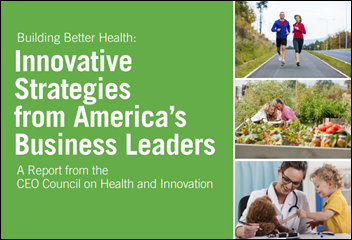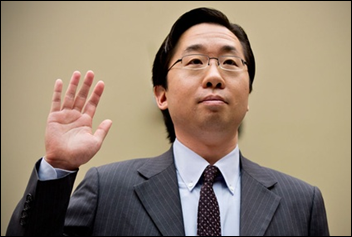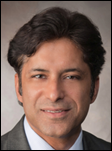CMIO Rant with … Dr. Andy
Now Why Didn’t I Think of That?
By Andy Spooner, MD
I am sure the AMA meant well in its statements demanding some changes to how the business of designing and implementing EHRs should go. I like the spirit in which the statements were offered. I see that these statements resonate with physicians. The problem is that I am not sure what action to take in response to them.
I have worked with several EHR companies, and all of them do all of these things that the AMA recommends— even companies that are small or struggling – at least the things that are within their control.
Some of the items on the list are not really within the control of the software at all. For example, the AMA recommends that "EHR systems … should … allow physicians to delegate tasks as appropriate.” Isn’t this more a matter of policy than software design? If it is acceptable from a regulatory standpoint to delegate some data-management task, I don’t really know how an EHR could prevent one from delegating it. The AMA could really help by lobbying against regulations that require overly detailed physician documentation, like the CMS E & M coding guidelines, which really set a floor of complexity below which we cannot sink.
The statements are also somewhat self-contradictory. For example, we are supposed to expect our EHRs to "reduce cognitive workload,” and at the same time "track referrals, consultations, orders, and labs so physicians easily can follow the patient’s progression throughout their care.” The latter entails a massive “cognitive workload.” To do all this tracking on paper would be intractable; therefore we did not do it, and had a lower “cognitive workload” as a result. The EHR at least gives us a way to track all this stuff, but one still must take a look at the data and react to the fact that Patient X never made it to see the cardiologist you referred them to. On paper, you might never have known this until they came back in for a future appointment (if you could even find the note where you mentioned the referral). In the EHR, you can track this stuff prospectively or post-hoc … either way, there’s “cognitive workload.” Is this workload the fault of the system that makes it possible for you to do what was impossible before?
The fundamental “problem” with EHRs is that they allow us to do more. For example, we can comply with documentation regulations at a level far exceeding what was ever possible on paper. We can examine information that was simply not available before. We can track things. We can review the lifetime clinical record. We can peer into the practice of multiple specialists. We can obtain records from providers located hundreds of miles away in seconds — even if they do not use the same brand of EHR we use. We can see which prescriptions got picked up, and which did not.
On paper, we got accustomed to lack of access to information. Now that we have more, we want to give our patients the very best service possible by reviewing all of it. We should review all of it. We need to realize that access to information is not a design flaw … it’s what we’ve wanted since the earliest visions of EHRs. It comes at a cost, but most people would agree that it is our job to synthesize what we know and can know about a patient.
The other big contradiction in the statements seemed to assume that user input is not being sought by those who design EHRs. If anything, EHR designers seek too much user input, trying to make the systems do all things for all people and making these systems, following the exact advice of the AMA, “customized for each practice environment.” Customization can be really good, but it does not tend to make software simpler. I have heard people ask why the EHR can’t work more like an iPod. Part of the reason it cannot is that the iPod user interface was not designed by trying to accommodate every conceivable use of the device. Steve Jobs openly eschewed focus groups for a reason. I am not suggesting the same approach for the EHR industry. But customization begets complexity. And we work in a complex profession.
I went for a checkup the other day. My internist and I went through my chart, reviewing meds, ED visits, consultant reports, family history, and so on. In the old days we might have just shot the breeze for a few minutes, and I might have brought up a few tidbits of stuff I remembered about my medical past. And that’s all he’d have to work with. He has more to work with now. I feel like he knows me, and can give me good advice. The visit probably took longer than it might have in a less information-rich time. Is that bad?
My recommendations to the AMA would be:
-
Lobby to simplify E & M coding guidelines. Make reimbursement guidelines more about time than the number of bullets you can document.
-
Set a professional standard that text should not be copied forward, since reading the same paragraphs over and over (placed there for bogus "billing purposes”) is unnecessary.
-
Promote reimbursement incentives for those who use choose to use time-saving, existing tools to summarize the patient’s state, like the problem list.
-
If it is thought that there is a minimal number of clicks or certain kinds of displays that are acceptable to do something, write a specification and lobby to make it part of an incentive program. Personally, I am skeptical that such a specification is possible to create, but there is probably much to be learned in proving me wrong.
-
Work to align AMA policy with the literature on EHRs. If there are gaps in that literature (there are), encourage the filling of those gaps in AMA journals so that statements like “the quality of the clinical narrative in paper charts is more succinct and reflective of the pertinent clinical information” or “these products have performed poorly in real-world practice settings” have some objective basis.
-
Get to know people at EHR companies and align statements with what they are actually doing. Commission an article for JAMA that explains how this industry really works. Include interviews with the physicians who do the design — there are lots of them.
We have all experienced clinical software that seems like it could be more elegant or functional. The fact that EHR software creators (both the commercial providers and the home-grown shops) continue to publish upgrades is testament to that. All of those upgrades reflect a desire to achieve the goals the AMA articulates, while continuing somehow to maintain stable software and respond to a torrent of user feedback to allow the software to work better within the team-based workflows we all use. Organized medicine could really help things along by setting professional standards, promoting advancement of knowledge, and, most importantly, by lobbying for regulations that reduce complexity of the practice of medicine.

Andy Spooner, MD, MS, FAAP is CMIO at Cincinnati Children’s Hospital Medical Center. A general pediatrician, he practices hospital medicine when he’s not enjoying the work involved in keeping the integrated HER system useful for the pediatric specialists, primary care providers, and other child health professionals in Cincy.














































The article about Pediatric Associates in CA has a nugget with a potentially outsized impact: the implication that VFC vaccines…